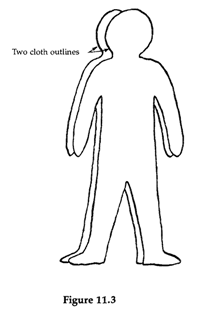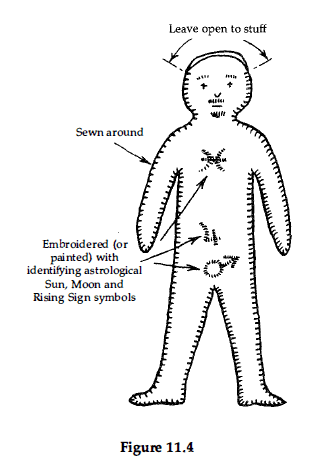
Two figures are prepared in this way; one representing the male and the other the female. All of this preparation, of course, should take place in the Circle, and can be done by the individual or by the whole coven. Since you are seeking your "ideal mate" then, as with candleburning, make the second figure with all the qualities that you seek. It is nameless but again can display physical desires (e.g. long blonde hair) and be made with all attributes in mind. Remember, this is strong magick. It is for a permanent relationship so do not use it just to obtain a partner for a brief affaire.
When ready lay the poppets on the altar, one at the left hand end of your sword, or athame, and one at the right hand end. They should be in front of the weapon. Also on the altar lay a piece of red ribbon, twenty-one inches in length.
Petitioner: "O mighty God and Goddess, Hear now my plea to you. My plea for true love for ...(Name)... and for her desire."


